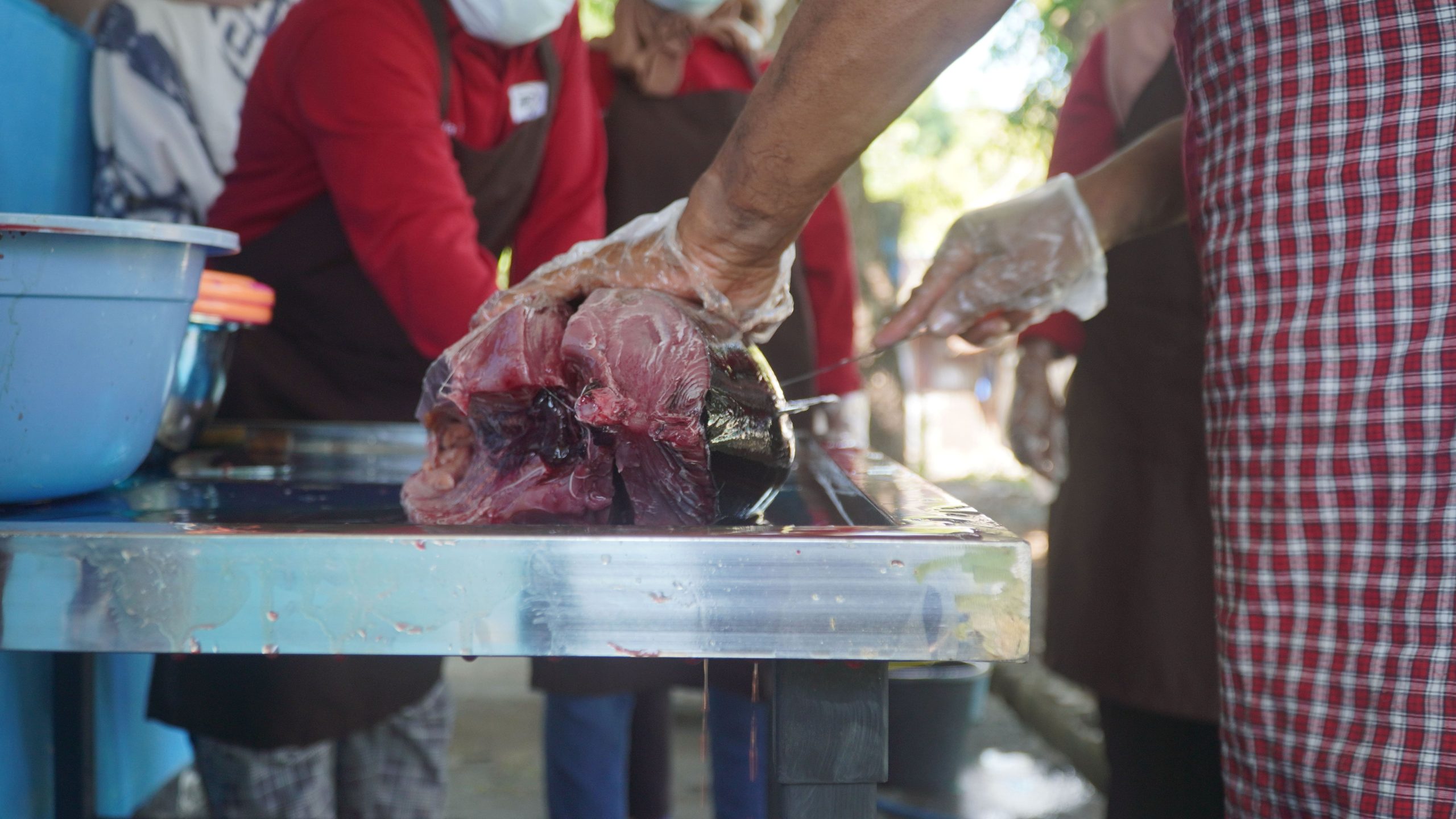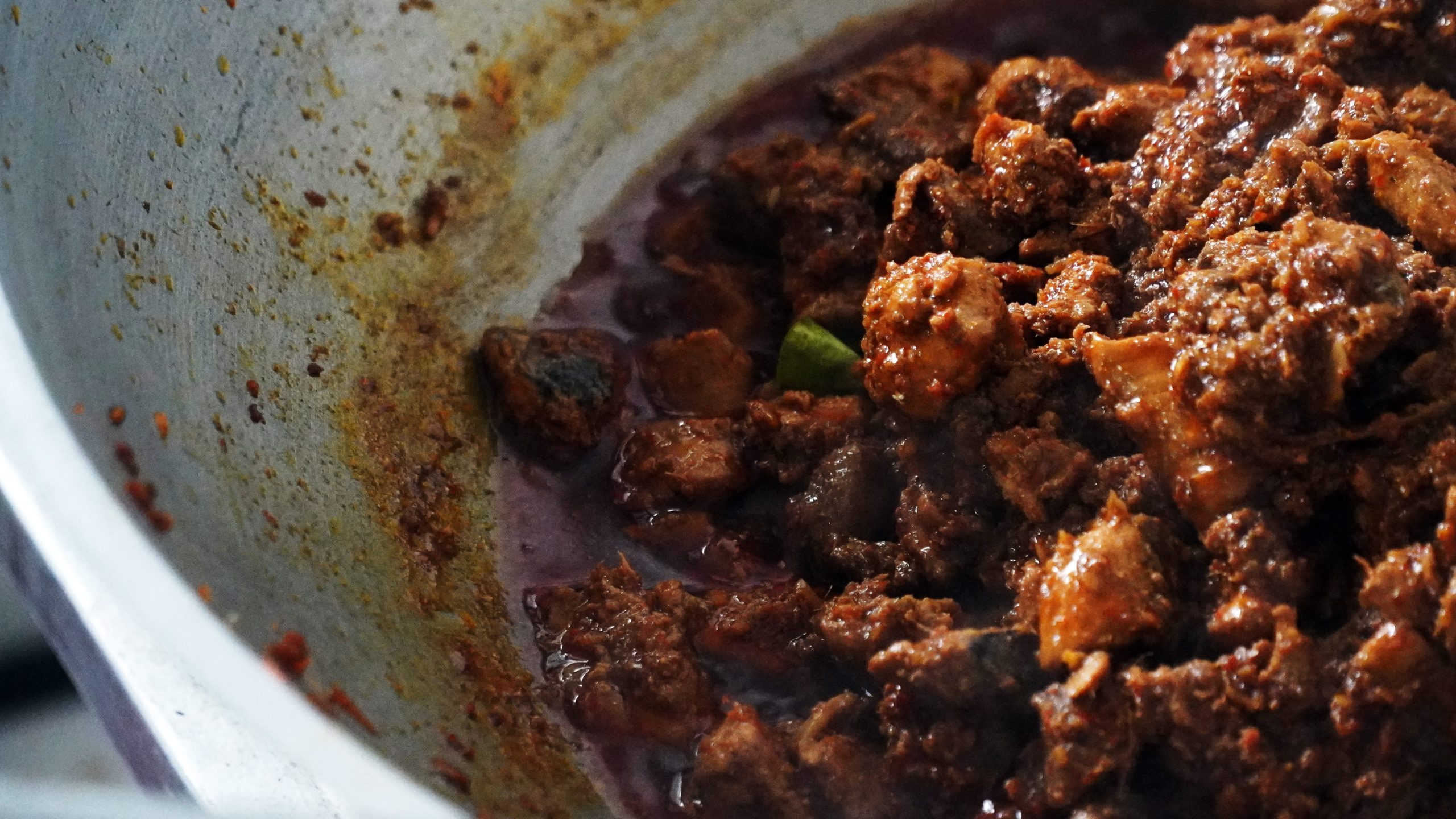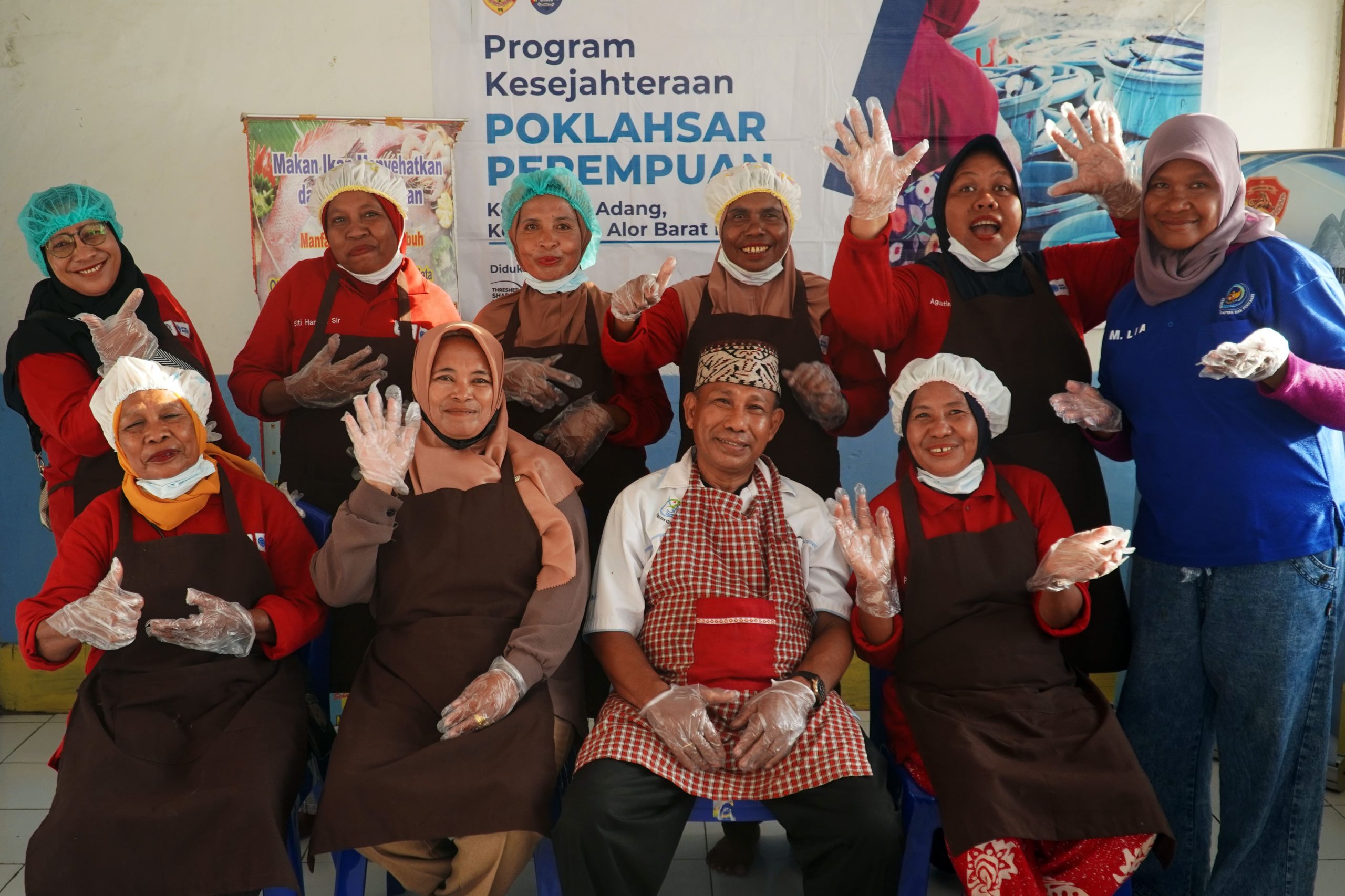
The Kokar Village Micro, Small, and Medium Enterprises (MSMEs) group participated in a tuna product diversification training organized by Thresher Shark Indonesia. This was the third training session focusing on developing processed tuna fish products and introducing new innovations such as smoked fish (se’i ikan) and dried fish.
The training was held on June 20-21, 2024, at the Secretariat of the Women’s Group of Fishery Product Processors and Marketers (Poklahsar) Kokar Indah, Northwest Alor. For two days, the training was led by Yohanies Pandie from the East Nusa Tenggara (NTT) Marine and Fisheries Agency.
The activity began with a theoretical presentation on the importance of the nutritional content in fish meat. Afterward, the trainees learned how to process tuna meat, including how to cut (fillet) tuna fish. The filleted tuna meat was then sliced into smaller, thinner pieces.

After the tuna meat was cut into thinner pieces, participants prepared various seasonings such as garlic, salt, pepper, flavoring, and brown rice. The seasonings were measured as needed based on Yohanies’ recipe and marinated for 30 minutes.
After the seasoning has been absorbed, the tuna meat is placed on the fireplace for the smoking process. The smoke is generated by burning candlenut peels and kesambi logs. Candlenut peels are used because they produce a more durable fire, while kesambi wood is used to create more smoke.

The fish smoking process takes about 30 minutes. Once cooked, the participants tasted the tuna se’i together. They agreed that the seasoning in the se’i tuna was too strong and decided to reduce it on the second day of training.
On the second day, the activities focused on improving the taste of the se’i fish. The spices were reduced to achieve the desired flavor. After the adjustment, they were satisfied with the taste of the se’i fish.
In addition to se’i ikan, participants also learned to make other tuna preparations such as tuna rica-rica, fish balls, fish satay, and dried fish. Yohanies explained that the group already understood and could produce dried fish well. Therefore, on the second day, he emphasized improving hygiene aspects in production, such as selecting protective containers and using more hygienic packaging.
Yohanies also noted that this training is expected to strengthen the sense of kinship among group members.

Yakomina Kamengon, Head of the Development Section of Adang Village, Kokar Village, expressed her gratitude for Yohanies Pandie’s participation as a resource person.
“We from the government are very supportive of this activity, and hopefully, after this training, processed tuna products can develop and benefit the people of Adang Village,” said Yakomina.
Laraswati Clarita Ola, the Women’s Poklahsar Welfare Program Coordinator, expressed her appreciation for the support. She noted that the local government’s backing will certainly motivate participants to continue developing processed tuna products.
Meanwhile, Ade Irma Mahmud, Chairperson of Poklahsar Kokar Indah, expressed her gratitude to Yohanies for sharing his processed tuna recipes. “With this recipe, we can process fish into more valuable products and have options other than just selling it at the market,” said Ade Irma.

At the end of the training, Yohanies emphasized the importance of maintaining consistency in taste and product form. He mentioned that while participants may modify the recipes as they wish, they must record any changes to ensure future production remains consistent. Consistency in taste and hygienic packaging is crucial for ensuring the product remains popular with buyers.
Author: Laraswati Clarita Ola/Aqilah/Umar Tusin/Vivekananda